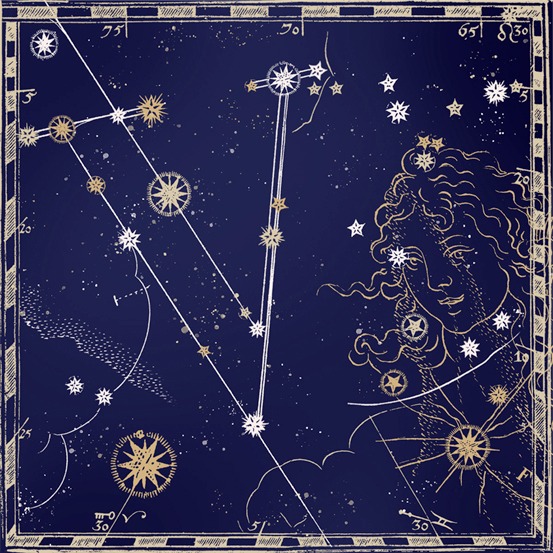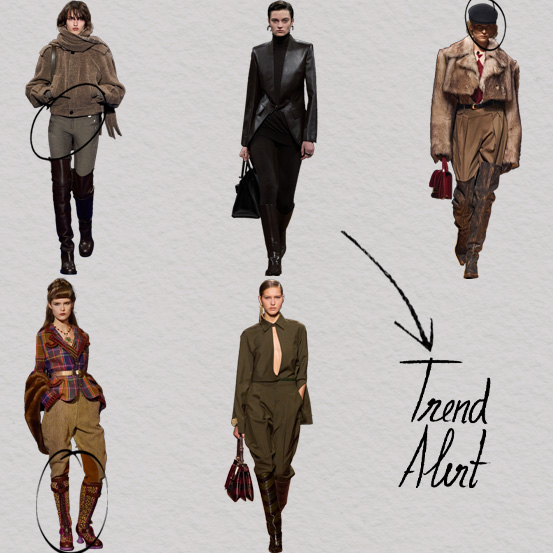The Blossom Issue
When it comes to fashion, there's no point in swimming against the current, the trends of the past are always resurfacing.
I've lived long enough to see the revival of trends I was conditioned to hate. After a pre-adolescence haunted by the idea of low-waisted pants, seeing this sinister specimen disguised as clothing on catwalks, in stores, and on the streets is a traumatic experience. The terror that fills my soul is enough to catalyze questions and theories that are dangerously close to conspiracies. At the whim of some cruel deity, are we forced to repeat the same cycle? What mysterious force compels us to wear similar clothes as the firmness of our body loses the battle with gravity? This manic state turns our minds into a corkboard and our thoughts into the stereotypical red threads that unite a worrying number of photographs. We want to find the culprits who put us in this Machiavellian fashion cycle. We hesitate to simply blame the nostalgia factor. The term, which is the scapegoat for matters as serious as the rise of far-right movements in recent years and as frivolous as the decline of Hollywood, is complex. The sentimentality of the past is subtly contaminated by the conservatism of the past. The "I was born in the wrong generation" testimonies proclaimed as soon as you hear The Rolling Stones or have (yet another) failed Tinder date can be sinister. But fashion seems to escape this complex duality. The uniforms of the past are rarely associated with the values of when they were first worn. And frankly, our problem isn't the social values of the Y2K era, just the revelation of our love handles.
Our internal desperation is such that we are forced to turn to outside help. Mona Mrad is an academic at the University of Sharjah in the United Arab Emirates. With a PhD in marketing, Mrad specializes in the sociology of fashion. The first clarification she makes during our interview is disappointing. "Unfortunately, there's no one to blame." Instead, the sociologist proposes an answer that is as frustrating as it is complex: "Fashion trends are based on social, cultural, economic, political and environmental changes, etc." According to Mrad, fashion is no different from other cultural trends, establishing itself as a mere "mirror of the way we understand the world around us." The expert anchors her thesis on historical examples. "If we think back to the First World War, minimalism was popular because comfort was prioritized over elegance, and it was at this time that we see the rise of names like Coco Chanel. After the Second World War, the popularity of Christian Dior's New Look is explained by the post-war climate, in a society desperate to turn back the clock." The political factors of the past explain the popular silhouettes, patterns, and textures. According to the expert, several theories elaborate on these correlations. "George Taylor invented the hem theory." The economist's thesis creates a link between the economic climate of a historical period and the length of skirt hems. "The theory is based on the 20s. The decade, extremely prosperous in economic terms, saw skirts rise, legs were to be shown in the same way that money was to be spent. A decade later, in 1930, the Great Depression changed the economic patterns of the population and, as a consequence, the height of the skirt hem." The theory is just one of the ways Mrad explains the panoply of factors that can affect something that, at first glance, seems basic or superficial. We wondered if anyone had ever thought of equating the waist height of jeans with anything. Mrad says not yet.
It is in the above explanations that we find the justification for current trends. According to the expert, "If we think about the macro-trends in the fashion industry, we can see a return to classic minimalism." For the sociologist, the reaction is more than natural, it's a direct effect of the pandemic. "Online, people are obsessed with the idea of building capsule closets, full of classics that they can wear forever." It is this notion that explains the recent fascination with luxury fashion. "When people have less to spend, they become fixated on the idea of pieces as investments, and it's at times like these that we see the growing popularity of brands like Chanel or Hermès. Goods from these brands are seen not just as an outward sign of wealth but as escapes from the cycle of consumption." If there is any doubt, the sociologist recommends thinking about the width of your jeans. "Denim is one of the most understandable examples of this cycle: every five to ten years or so we notice that the trend changes. Think back to the 2010s, when extremely tight pants were the trend. As we entered the 2020s, pants became wider. The pandemic was the kiss of death for jeans that clung to the legs and no longer made sense when we became so used to being comfortable at home."
But even if we believe the sociologist's thesis (which we are inclined to do), some doubts remain. If everything is related to the world around us, does that mean that the fashion industry itself is powerless over its creation? What happened to Miranda Priestly's fantastic speech? Was Meryl Streep selling us a fantasy when she tracked the popularity of cerulean (not blue, not turquoise, not lapis lazuli)? Well, according to Mona Mrad, the value of designers can't be completely dismissed. "Although it is related to factors that are external to it, fashion is still a cultural facet with a relative level of autonomy." The sociologist elaborates, "In academic terms, there are two ways of justifying trends: trickle down and bubble up." The first follows the pattern described by Miranda Priestly, when "a designer creates or brings back something that becomes extremely popular and is therefore recreated and imitated by its competition and, over time, by progressively cheaper brands." The second, the so-called bubble-up, arises when the popularity of a trend subsequently affects the "elite of the fashion world". Mrad sums up her thesis with an example: "Think of streetwear, the style didn't come from luxury brands, it came from the cultures of minority groups, but over time it took control of all strata of the industry." The sociologist clarifies, "it's not that fashion has nothing to do with producing trends, it produces them, but it's the economic, social, political and cultural factors that make them popular."
Sociology has a peculiar effect on the individual. You only have to read a text by Bordieu or Foucault to feel like little ants destined to follow the path marked out by the masses. Are these tendencies, which seem to have so little to do with the sense of style we are so proud of, impossible to escape? The university professor reports, "Well, we're not slaves to what everyone else is doing, we all have a sense of individuality in us, but it would be utopian to think that we don't suffer at the hands of social pressure." This omnipresent force conditions us in ways we can't understand. According to Georg Simmel, one of the most influential sociologists of the 20th century, our sense of style derives from the tension between two forces that, although opposing, are fundamental to our social existence - the need to distinguish ourselves from one another and the propensity to imitate one another. This extremely sensitive balance partly explains the life cycle of a trend. When we see a small group of people wearing a style of jeans, we think that doing the same includes us in this circle, but as soon as the trend takes on fast fashion proportions, interest wanes, replaced by the fear of being the same as each other. According to Mrad, the life cycle of a trend, as well as the likelihood of participating in it, has been revolutionized by social media. "It used to be the people around us, in our cities and communities who inspired us, but today we open an app and we're receiving visual information from people thousands of kilometers away." This new reality: while on the one hand, it makes "escaping" a trend much more difficult since we are confronted with it dozens or hundreds of times a day (depending on how self-controlled we are with TikTok), it is also easier to become trendsetters. "In a way, it's like we're celebrities, we have a reach that in the past was reserved for only the rich and famous," describes Mrad. Social networks are just one of the technological advances that complicate our initial question. "The speed with which we evolve makes understanding the life cycle of a trend increasingly difficult." It used to be that every couple of decades, a certain trend would return with minor changes. The silhouettes of the 1970s became popular in the 1990s and, in turn, their aesthetic came back into fashion in the 2010s. According to Mona Mrad, this cycle is accelerating. "Nowadays we always have to be aware of the unpredictability of technological advances. How can we know what will be popular when we don't even understand the materials of the future?" The expert mentions last year's most debated and feared topic: "Artificial intelligence will also affect the way we consume fashion." The sociologist explains that it is already involved in the popularity of current trends, through social media algorithms and other mysterious characters. "Trends are no longer just planned by people, they are no longer just followed by people, but also CGI." No, she's not talking about the questionable graphics in Marvel movies, but "computer-generated influencers". The seemingly dystopian term is not a creation of the Black Mirror series, but a reality that floods social networks with suspiciously perfect faces. The sociologist gives the example of Lil Miquela, an influencer created in a laboratory (or rather, in a virtual program) who has amassed more than 2 million followers on Instagram. "The future has infinite possibilities, it's not strange to think that artificial intelligence will be a source of cultural nutrients for humanity." It's strange to think about the experience of children today. How will the Alpha generation react to trends in the future? Will they, like us, be confronted with cringe memories when they walk into a store in twenty years? What will arouse such shame? Will it be crop tops? Maybe extra-wide jeans? Or will flying cars and intergalactic travel occupy them too much? We don't have the answers, and our red thread doesn't go that far it's already running out.
Translated from the original in The Blossom Issue, from march 2024. Full credits and stories in the print issue.
Most popular


Relacionados
 (14).png)





 (15).png)